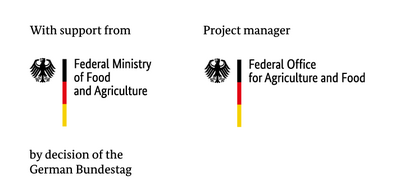Project
Background & Objective
Around 40% of ammonia emissions in Germany originate from the application of manure (slurry, farmyard manure, leachate, but also digestate from biogas plants). Manure generally contains high amounts of ammonium nitrogen (NH4+-N), which can rapidly be transformed into gaseous ammonia, in particular on exposure to the atmosphere. In that way it discharges to the air and is lost as a nutrient for crops. That’s why, nutrient-efficient, environmentally and climate-friendly techniques for spreading manure are an important starting point for reducing emissions.
With the amendment of the fertiliser ordinance (Düngeverordnung, effective since 06/2017), slurry and digestate may only be spread on croplands and grasslands to a limited extent in autumn. In this way nitrogen surpluses after harvesting the main crop and their negative consequences for groundwater and climate can be avoided. Thus, the application of slurry and digestate will increasingly take place in standing plant biomass by means of band-shaped application on the soil surface, in line with the nitrogen requirements of the crops.
This new regulation might even result in higher ammonia emissions from organically fertilised croplands and grasslands, because immediate incorporation into the soil, which is an easy option to reduce emissions from applied slurry, is not feasible in a standing plant biomass. In particular, for standing plant biomass low-emission techniques are required, those both optimally meet the nutrient requirements of the plant and minimise emissions that are harmful to the environment and the climate.
